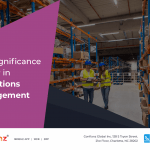To keep up with software innovation, you have to be able to move quickly and easily. This is the mentality that guided the creators of the agile methodology.
The agile testing methodology is your best bet if you want to modernize your testing practices. Agile adapters see higher quality code, faster turn-around time, and improved scalability and flexibility. Because of this, agile has become the standard practice in software development.
So, how can agile testing revolutionize your software development? Let’s dive in.
What Is Agile Testing?
Agile testing follows the principles and ideas of agile software development, which is an umbrella term that encompasses different ways of working in an unpredictable, sometimes turbulent environment.
This style of software development is defined by 12 principles that center on customer satisfaction, prioritize the ability to respond to changes, and define success by working prototypes. In addition, agile emphasizes collaboration, flexibility, and continual improvement.
Before Agile development took the spotlight, the industry standard was the waterfall model. This model dictated that every stage in development had to be completed before the next one could start. The waterfall project management method was initially used for construction and was later adapted for software development.
While waterfall development may sound useful in theory, unfortunately, its linear aspect makes it challenging for developers to change or adapt anything that would involve returning to an earlier stage of development. Of course, we know that software innovation frequently requires going back to earlier stages. And so, Agile was developed to address those shortcomings.
If you have been in the software industry for a while, you know that Agile development isn’t exactly a new idea—the Agile manifesto came out in 2001—but its principles keep it fresh.
The specific branch of agile testing applies the idea from the Agile methodology s to the software testing process. It is all about delivering high-quality software quickly with a maximum response from the customer.
The process is broken down into “sprints,” which is any set of time agreed upon. It can range from one week to 30 working days. Many product teams work in two-week sprints. In true Agile spirit, though, the timeframe of a sprint can be flexible for specific teams.
Sprint testing involves breaking down the development process into smaller chunks and testing each one individually. This allows for more thorough testing and creates an opportunity for quicker feedback from stakeholders and users.
Life Cycle of Agile Testing
Agile testing means testing isn’t a separate stage in the overall software development process. Rather, it happens alongside software development. Because agile is iterative, there isn’t an overarching life cycle. Instead, it happens in a series that occurs until the software development is finalized.
The life cycle of Agile testing is made up of four distinct stages: planning, designing, executing, and reviewing.
Planning sprints
While planning isn’t as integral to the process in Agile methodology as it is in the waterfall method, it still plays a vital role in agile testing.
Planning allows the team to prioritize and organize upcoming tasks, creating reasonable timelines. It also provides a chance for the team to collaborate and brainstorm before they begin working. This critical step can save lots of time later because it ensures that every team member has an opportunity to speak up at the start of the process.
Designing tests
This stage involves creating and organizing test scenarios to ensure that the software meets the customer’s requirements. It covers the steps of identifying user stories, developing acceptance criteria, and creating test cases that cover all possible scenarios.
Executing tests
During this phase, the actual testing happens. The testing team needs to stay in close contact with the developers for this to make sure they communicate any issues they run into and bugs they come across.
Review
In this final stage, the team meets with the stakeholder to assess and review the product and how well it matches their wishes. It’s also an excellent time to check the overall progress of the software’s development and features.
Benefits of Agile Testing
Testing is a critical part of software development. With out it, the software will inevitably become buggy and lead to a poor customer experience. But it can also slow down development if not handled well. That’s where agile testing comes in.
Here are some of the benefits of following the Agile testing method for software development.
Identify problems early
Because of agile’s style of sprints, finding issues early on is significantly easier.
Traditionally, testing is a separate stage where testers review a completed product. However, this can create significant problems when testers find bugs affecting the product’s cornerstone. Fixing core problems with the codebase can cause massive delays and disruption.
With agile, that risk is far less since the product is tested every step of the way.
Reduce costs
While Agile includes a little more upfront labor work, it is overall a cost-effective methodology. Because of the faster bug detection, agile testing generally reduces the development cost since it allows teams to address bugs early, before they become expensive problems.
In addition, the agile method allows testers to focus on one section of the software at a time. This lets them prioritize the most critical parts of the software and dedicate their time to what matters, further speeding up troubleshooting.
Improve collaboration
In contrast to linear project management, agile testing improves collaboration between teams and stakeholders. Fast feedback loops encourage frequent communication between developers, testers, product owners, and customers.
Agile also helps teams to work together more effectively by providing an organized structure for tasks.
Best Practices for Agile Testing
At Confianz, we believe the agile methodology leads to better outcomes for our developers, partners, and clients. Over the years, we have found it useful to follow certain best practices.
First, testing should combine manual tests with automated ones. These automated tests take the burden off your team and allow them to focus more on the user experience of the software. It will also ensure your tests are run consistently. In addition, it’s essential to have an effective process for logging defects and tracking them through to resolution.
Agile should also involve regular communication between team members, a clear definition of roles and responsibilities, and an organized process for tracking progress.
Finally, for agile testing to truly work, teams must prioritize customer feedback. Hearing from customers early and often is essential for getting valuable insights into how the product performs in the real world and will function for the targeted end user.
Think Agile
Effective software testing is the difference between a successful product and a total flop. At Confianz, we believe the agile methodology helps us deliver a better product to our customers.
Do you have an app or software development project? We’d love to hear about it and find out if Confianz is the right company for you to partner with.
If you want your program to have the best chance for success, reach out to us! Confianz is here to partner with you and ensure your product is polished and market ready. Confianz Global Inc. is an established Software development company and a leading provider of end to end IT services in the United States. We provide custom development solutions across Software Development, Mobile App Development, Odoo ERP customization & Implementation and Responsive Web Design & Development Services.
So call us today to get started!







